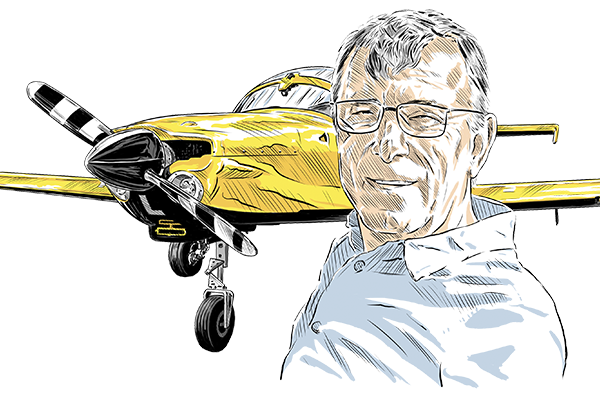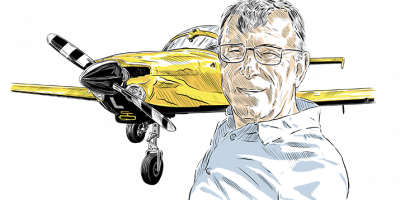Carb icing – again
As a Cessna 152 G-BSCZ aircraft climbed through approximately 200ft agl, near RAF Halton, Bucks, following a touch-and-go, its engine failed.
The instructor took control and executed a forced landing in a nearby field. During the landing roll the nosewheel dug into the soft surface and the aircraft inverted.
Another aircraft, airborne in the vicinity at the same time, experienced severe carburettor icing on several occasions. On reflection, G-BSCZ’s pilots considered it most likely that carburettor icing caused their engine failure.
Comment: Carburettor icing remains a problem with many piston engine aircraft. There seem to be occasions where significant localised conditions can cause significant icing problems, perhaps only for a short period.
Stay in the habit of regular carb heat usage, particularly at lower power settings, such as on approach – but reselect carb heat to COLD in readiness for a go-around.
Engine failure
On Monday morning, 13 February 2023, a pilot and six passengers (skydivers) took off from Delta 200 Aerodrome (Skydive Cape Town) with the intention to climb to a designated altitude from where the skydivers would jump out.
The pilot stated that after take-off, he climbed and remained in proximity to the aerodrome. At a height of approximately 3,000ft above ground level, the engine failed. The engine oil leaked from the engine and sprayed the windscreen, limiting his forward vision.
The skydivers were instructed to remain onboard as the aircraft was still too low for them to jump off safely. The pilot identified a ‘quiet’ asphalt road and managed to execute an uneventful forced landing on the road.
On inspection of the aircraft, it was noted that a substantial amount of oil leaked from the engine compartment. Upon removal of the top engine cowling, it was found that there was an uncontained engine failure; and there was a hole on the upper crankcase. Nobody was injured during the occurrence, and damage to the aircraft was limited to the engine.
Comment: The pilot did a good job in landing a sizeable Cessna 206 onto a road with several passengers on board. I imagine he found the occasion anything but ‘uneventful’!
Losing power 200ft up…
On 6 August 2022, at Popham Airfield in Hampshire, at approximately 200ft agl after take-off, the engine of a Piper PA-28-161 lost power and could not be recovered.
The pilot selected a field for landing but, after touchdown, was unable to stop before hitting a hedge.
Comment: An engine failure at 200ft is obviously only just after take-off, and quick work is required to ensure a safe outcome. The pilot did a good job in – first and foremost – lowering the nose promptly to maintain speed.
Running into a hedge at the end of the landing field is a small price to pay, and unlikely to result in serious injury to any aircraft occupants.
Shoulder harnesses get the thumbs up
On 6 August 2022 at Eastfield Farm, Louth, Lincs, shortly after a normal touch down, the left main landing gear collapsed on a Pitts S-1C, and the aircraft nosed over into an inverted position. The pilot reported that the landing gear had fractured, possibly due to fatigue. The pilot believed that his lack of injury was due to his wearing a five-point harness and helmet.
Comment: The point to note here is the pilot’s comments regarding wearing a five-point harness.
While most GA aircraft do not have such harnesses, it is important to wear whatever shoulder restraint that may be fitted during take-off and landing to avoid unnecessary in the event of an accident at these phases of flight.
Shoulder harnesses 2: when not worn…
The pilot of a Pegasus Quik flex-wing microlight arrived at Harringe Court Farm airstrip, where the aircraft was based, at about 1000 hrs on the day of the accident.
He prepared the aircraft for a planned solo flight to two local airstrips, both of which he had flown to before. The weather in the morning was described as generally good, although there were reports of some thermal air currents coming off the hill on which the airstrip was positioned. The pilot reported he was used to such conditions and, whilst uncomfortable at low level, the thermal effects soon dissipated during the climb after take-off.
During the landing, the aircraft veered to the right and bounced before tipping over onto its right side. The cause of the accident could not be determined.
Although the pilot was wearing a lap strap, he was not wearing the shoulder strap provided. Consequently, he sustained serious facial injuries when his head made contact with the front strut.
Comment: With remarkable timing, the report into this accident was published just in time for the latest copy date. It is difficult not to see how vital it is to attach shoulder harnesses for take-off and landing if fitted to the aircraft.





